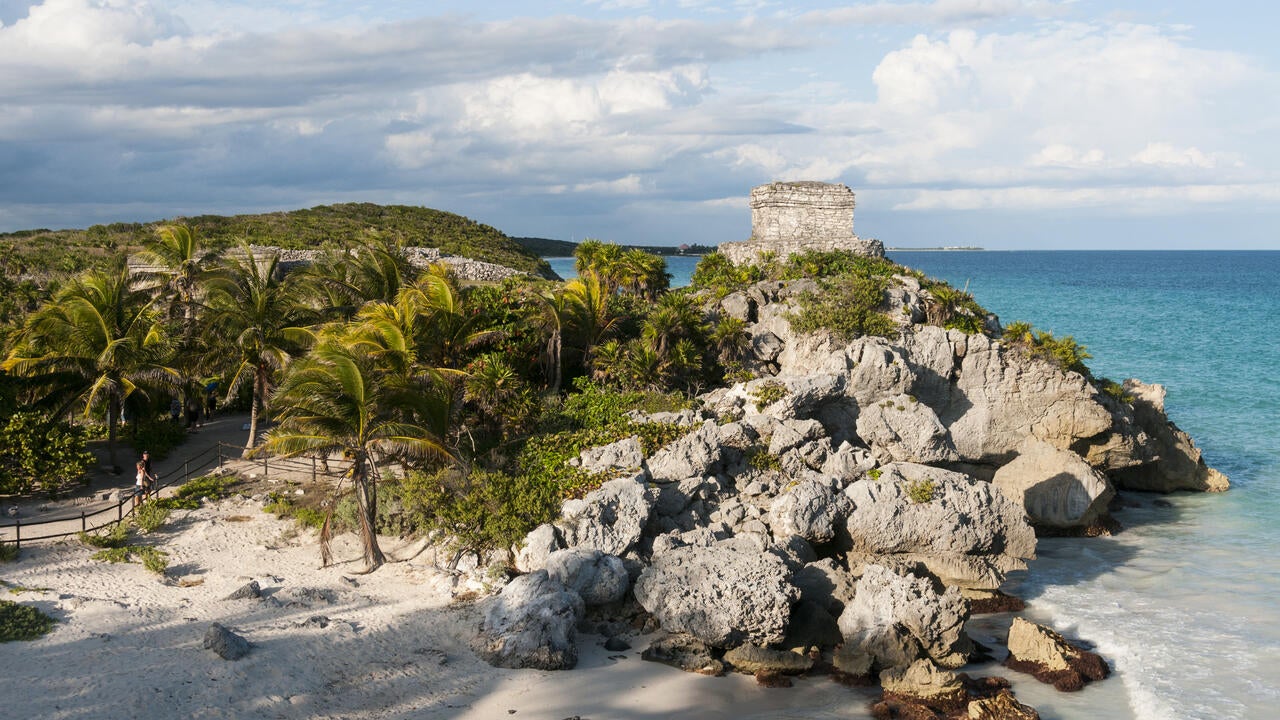
Yucatan climate past informs the global climate present
Changes to the water table throughout the Yucatan Peninsula impacted the Maya and now offer lessons on the effects of present-day climate change.

Changes to the water table throughout the Yucatan Peninsula impacted the Maya and now offer lessons on the effects of present-day climate change.
By Media RelationsNew research shows changes in tides and hurricane activity played a part in upending the Maya civilization centuries ago.
Changes to the water table throughout the Yucatan Peninsula impacted the Maya and now offer lessons on the effects of present-day climate change, researchers say.
“Big parts of the Yucatan Peninsula sit on rock formations made of limestone, with fissures and caves throughout,” said Aaron Coutino, a recent PhD graduate in applied mathematics at the University of Waterloo. “Rainwater and runoff accumulate in the cave formations and underground rivers, and that’s where much of the freshwater is on the Yucatan.”
“If you have changes in sea level or tidal activity, then what happens in those fissure zones is a mixing between the fresh water on the surface and the salty water that intrudes from the ocean underneath.”
The researchers show that fluctuations in Maya population and settlement patterns were impacted by access to fresh water. Long before the arrival of Europeans and the eventual destruction of the Maya civilization, the archaeological record shows cycles of internal disruption.
“Sometimes things in Maya cities were good, and sometimes people seem to disperse out into the countryside,” said Marek Stastna, a professor of applied mathematics at the University of Waterloo and a co-author on the study.
“There’s a variety of theories in the archaeological community as to why. This research suggests it was to do with regular access to freshwater. The water stops being good for drinking and even stops being useful for irrigation. When you can’t irrigate your crops, you can’t have a city of 40,000, like some of the Maya cities were.”
The researchers placed sensors in bodies of water throughout the Yucatan to gather data. They found daily fluctuations of water levels and salination that show ocean tides impact even far-inland lakes. Their work offers new insights for archaeologists and climate historians, but also for present-day climatologists.
The researchers say the study informs how the contemporary world can think about the different ways climate change expresses itself. The Yucatan, with its unique water table, is vulnerable in particular ways. Other regions will have their specific vulnerabilities.
“Right now, you see how climate change expresses itself in places like British Columbia, with these huge forest fires. And in the Yucatan, climate change expresses itself through the underground water table. If you’re in Acadia, maybe the bigger concern is coastal erosion, but in the Yucatan change can manifest inland” Stastna said.
“People shouldn’t be thinking about whether climate change is happening, but how it expresses itself in different places.”
The study, Inland tidal oscillations within the Yucatan Peninsula, authored by Coutino, Stastna, Chelsi McNeill-Jewer and Eduard Reinhardt, was recently published in the journal Geophysical Research Letters.

Read more
Here are the people and events behind some of this year’s most compelling Waterloo stories

Dr. Chris Bauch, a professor of Applied Mathematics at the University of Waterloo, is part of a team that has developed a new approach to help public health officials predict where outbreaks might occur. (Elisabetta Paiano/University of Waterloo)
Read more
New research demonstrates that vaccine skepticism on social media can predict public health crises

Read more
Waterloo researcher Cameron Seth is breaking down the world’s hardest computer science problem piece by piece
The University of Waterloo acknowledges that much of our work takes place on the traditional territory of the Neutral, Anishinaabeg, and Haudenosaunee peoples. Our main campus is situated on the Haldimand Tract, the land granted to the Six Nations that includes six miles on each side of the Grand River. Our active work toward reconciliation takes place across our campuses through research, learning, teaching, and community building, and is co-ordinated within the Office of Indigenous Relations.